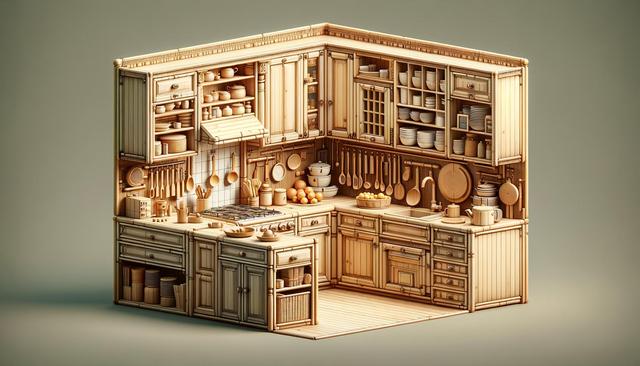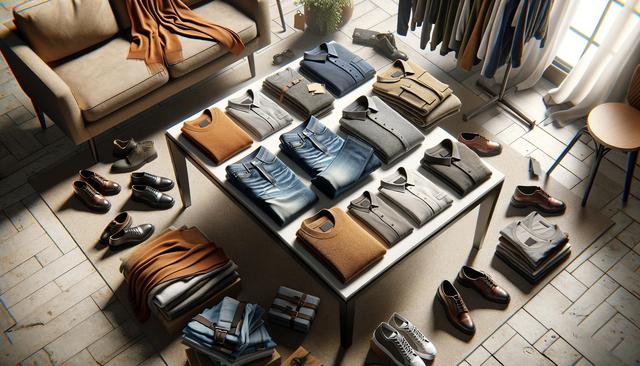
Explore Our Kitchen Cabinet Guide: Solutions for Your Home Remodel
Understanding Cabinet Materials and Their Impact
Choosing the right material for your kitchen cabinets is one of the most critical decisions in a remodel. The material affects not only the appearance but also the durability and maintenance of your cabinets. Some of the most commonly used materials include solid wood, plywood, medium-density fiberboard (MDF), and particleboard. Each offers different benefits depending on your budget and design preferences.
Solid wood is often chosen for its natural look and longevity. However, it may require more maintenance over time. Plywood provides excellent strength and is often used in cabinet boxes for its resistance to warping. MDF is a popular choice for painted cabinets due to its smooth surface, while particleboard is a more cost-effective option, though it may not hold up as well in the long term. When selecting a material, consider factors such as:
- Humidity and temperature in your kitchen environment
- Your desired finish and color
- Budget for both materials and installation
Balancing cost, performance, and appearance is essential to ensure your cabinets serve your kitchen well for years to come.
Cabinet Styles to Match Any Kitchen Design
Cabinet style plays a significant role in setting the tone and aesthetic of your kitchen. Whether you’re leaning toward a modern, traditional, or transitional look, there’s a cabinet style that can complement your vision. Shaker cabinets, known for their clean and simple lines, are among the most versatile and widely used. Raised-panel and recessed-panel doors offer more detail and depth, aligning well with classic kitchen designs.
For a more contemporary approach, slab or flat-panel doors provide a sleek, minimalist appearance. Open shelving and glass-front cabinets are also gaining popularity, offering a chance to display dishware or create a more open visual space. Key elements to consider when choosing a style include:
- Cabinet door profiles and hardware
- Compatibility with your kitchen layout and appliances
- Lighting and how it interacts with cabinet finishes
By understanding these elements, you can select a cabinet style that enhances your kitchen’s overall design while meeting your functional needs.
Layout and Storage Solutions
Efficient kitchen cabinet layout planning is crucial for maximizing storage and ensuring functional workflow. The traditional work triangle—linking the sink, stove, and refrigerator—remains a helpful concept when planning cabinet placement. However, it’s equally important to assess how you use your kitchen daily so that your cabinets support your habits and routines.
There are several layout options to consider, including:
- Galley kitchens with cabinets on both sides for compact efficiency
- L-shaped and U-shaped kitchens that enhance corner storage
- Island layouts that add extra cabinetry and workspace
Innovative storage solutions such as pull-out shelves, lazy Susans, vertical dividers, and deep drawers can significantly improve organization. Custom inserts for utensils, spices, and cutting boards also make your kitchen more user-friendly. Thoughtfully planned cabinets reduce clutter and make cooking more enjoyable.
Finishes and Colors That Elevate Your Space
Finish and color choices for your cabinets have a major impact on your kitchen’s mood and style. Whether you prefer a natural wood finish that showcases grain patterns or a painted surface for a more modern look, these choices contribute to the overall ambiance of your kitchen. Lighter colors can make a small kitchen feel bigger, while darker tones often add warmth and sophistication.
Popular finish options include:
- Stained wood for a classic, earthy feel
- Painted finishes in neutral or bold tones
- Matte or high-gloss finishes depending on your style preference
Additionally, two-tone cabinets—using one color for upper cabinets and another for lower ones—can create visual interest and a sense of balance. When selecting finishes and colors, consider your kitchen’s lighting, flooring, and countertop materials to ensure a cohesive design.
Budgeting and Installation Considerations
Planning a kitchen remodel involves careful budgeting, especially when it comes to cabinets, which often represent a significant portion of the total cost. Understanding the cost breakdown between custom, semi-custom, and stock cabinets will help you make informed decisions. Stock cabinets are pre-made and typically more affordable, while custom cabinets offer maximum flexibility at a higher price point.
In addition to cabinet cost, consider installation expenses, hardware, and potential modifications to your kitchen layout. Working with a professional installer can help avoid costly mistakes and ensure proper alignment and durability. Here are some tips for staying within budget:
- Set a clear budget early in the planning process
- Get multiple quotes for materials and installation
- Choose where to splurge and where to save
Proper planning and realistic expectations can help you achieve a kitchen that meets both your aesthetic and functional goals without unnecessary overspending.
Conclusion: Making the Right Cabinet Choices for Your Kitchen
Remodeling your kitchen is a significant investment, and selecting the right cabinets is essential to the success of your project. By understanding materials, styles, layouts, finishes, and budgeting strategies, you can make informed decisions that align with your personal needs and design goals. Whether you’re upgrading a small kitchen or redesigning an open-concept space, this guide offers practical insights to help you achieve a functional and visually pleasing result. With careful planning and thoughtful choices, your new kitchen cabinets can transform your cooking space into a more efficient and enjoyable part of your home.


